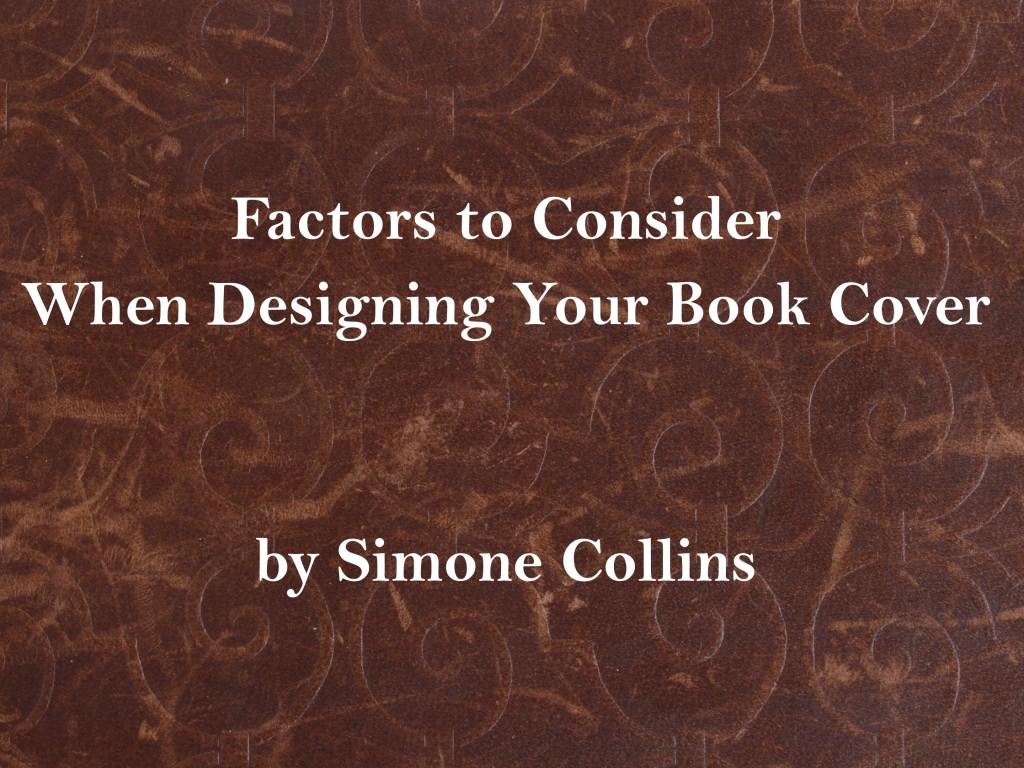Factors to Consider When Designing Your Book Cover By Simone Collins
Dear Writers,
Welcome to December. I hope that in between the turkey, pie, and shopping sprees, you’ve been taking time to write. If not, there’s no better time to start than right now!
Today we continue our Indie publishing series with a tip by the wonderful Simone Collins on what to consider when designing your book cover.
Happy Writing! Rochelle, the Write Now! Coach
I run ArtCorgi.com, an online marketplace that makes it easy to commission made-to-order art from up-and-coming artists. Through one of our targeted storefronts, ArtforAuthors.com, I work with authors to have book covers (as well as author portraits, illustrations, and marketing graphics) designed.
Designing a book cover is a challenging process, even when you are working with an experienced and talented artist. No matter how talented your artist, photographer, or designer is, it is up to you what ultimately appears on the cover of your book. Here are key factors to consider when providing direction to those helping you craft your cover.
What Subjects and Designs Work for Books in my Genre? Before committing to any particular concept or layout, peruse the competition. Have a look at the covers of other books in your genre that are vying for readers’ attention. Find trends and determine common factors that appear to drive interest.
For example, a quick glance at books categorized as romantic comedies on Amazon.com suggests that optimal book covers feature photographs of couples’ faces (in the midst of various romantic acts), legs, feet next to each other, and headless bodies in various states of undress.
On the other hand, a look at science fiction books reveals more illustration, with a heavy emphasis on space, post-apocalyptic landscapes, and space ships.
What Will Make My Book Stand Out? I do not recommend simply going along with whatever seems to be popular in terms of book cover design for your genre. Though it can help to know what sort of imagery readers are attracted to, you should also think carefully about how you can stand out. After all, how will you break through as a romance novelist if your book cover shows yet another pair of nicely-shaven female legs placed alongside a pleasant setting?
Consider ways in which you can play up popular book cover themes while also inserting surprising elements and twists. Maybe your romance novel cover will feature legs, but perhaps they will be hanging out of a ship’s porthole or covered in tattoos.
What Will Make My Book Alluring? In addition to making your book cover design different from its competition, think carefully about how you can work in an element of mystery or pose an unanswered question. People are more likely to click through links to articles, books, and videos that pique their curiosity.
You may, for example, have the ‘token spaceship’ of your science fiction novel’s cover floundering on the floor of a public bathroom, tipped on its side like a discarded toy. Wouldn’t you be drawn to that cover after seeing a page full of space ship illustrations in which every single ship is floating through space or a post-apocalyptic / futuristic world?
Obviously you would want any burning questions elicited by your book’s cover to be tied to its story, but you catch my drift.
Will My Design Be Visible in Thumbnail Form? While considering how your book might stand out and be alluring in online listings, you should also contemplate how it will come across in thumbnail form. With mobile browsing on the rise, people are seeing smaller and smaller versions of links and products. If your book cover isn’t easy to discern in a small format, it is less likely to catch potential readers’ attention.
Make sure your design is simple and bold enough to be recognizable even when it is shrunk down to the size of a quarter.
What Represents Me as an Author? Do not forget that versions of your cover art will probably be adapted into marketing materials, social media cover photos and images, and promotional posters. People will use your cover design in reviews and promotional posts. People will judge your character and personality as an author by your book’s cover more than they will by its actual content (think about it- far more people will ultimately see a book’s cover than go so far as to read its first paragraph).
It is imperative that your book cover therefore be something that you are proud of. Something that represents your personal aesthetic and values. Something you would be happy to stand next to and smile with in countless photos. Sure, you can always change your cover art down the line, but it pays to get it right the first time.
 About the author. Simone Collins is the co-founder and CEO of ArtCorgi.com, an online marketplace that makes it easy to commission made-to-order art from up-and-coming artists. Before kicking off her own company, Simone worked as Director of Marketing at HubPages, one of the world’s largest publishing platforms for authors and freelance writers.
About the author. Simone Collins is the co-founder and CEO of ArtCorgi.com, an online marketplace that makes it easy to commission made-to-order art from up-and-coming artists. Before kicking off her own company, Simone worked as Director of Marketing at HubPages, one of the world’s largest publishing platforms for authors and freelance writers.









